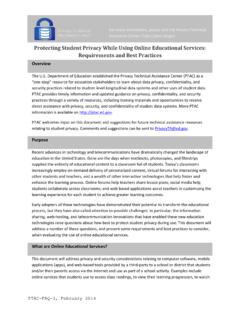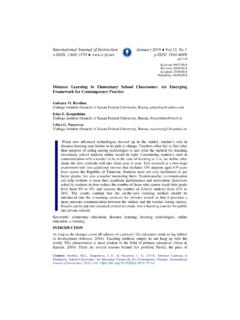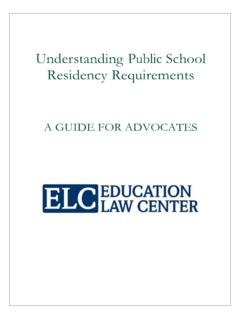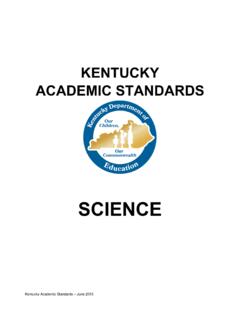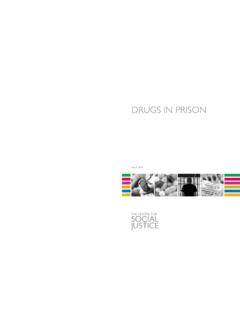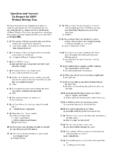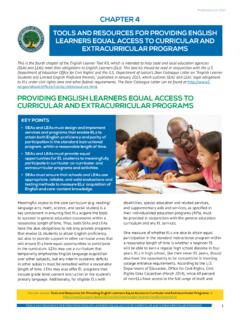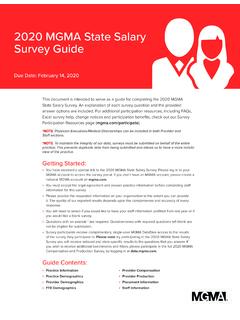Transcription of Department of Education
1 Republic of the Philippines Department of Education UNDERSECRETARY FOR CURRICULUM AND INSTRUCTION MEMORANDUM DM-CI-2020-00162 FOR/TO : BARMM-MBHTE Minister/Regional Directors Schools Division Superintendents FROM : DIOSDADO M. SAN ANTONIO Undersecretary SUBJECT : SUGGESTED STRATEGIES IN IMPLEMENTING distance learning DELIVERY MODALITIES (DLDM) FOR school YEAR 2020-2021 DATE : JULY 21, 2020 In accordance with the directive of the Office of the President that no face-to-face classes shall be held until the vaccine for COVID-19 becomes available, the distance learning delivery modalities (DLDM) shall be implemented this SY 2020-2021.
2 Pending issuance of the DepEd Order on the POLICY GUIDELINES ON THE IMPLEMENTATION OF learning DELIVERY MODALITIES FOR THE FORMAL Education , the Curriculum and Instruction Strand at the DepEd Central Office provides the following suggested strategies in implementing and managing DLDM. This issuance covers descriptions and considerations for each DLDM, the map of learning resources for each DLDM, and proposed actions to address potential challenges in implementing DLDM. The matrix of requirements of the DLDM is enclosed. Furthermore, should the vaccine become available, parents and learners are still given the discretion to continue with distance learning as long as there is a qualified learning facilitator who shall guide and supervise the learner at home.
3 This OUCI Memorandum includes the following appendices: Appendix A - General Guidelines and Considerations Appendix B - Descriptions and Considerations for Each DLDM Appendix C - Map of the learning Resources Needed for Each Sub-Category of DLDM Appendix D - Weekly Home learning Plan and Individual learning Monitoring Plan Appendix E - Sample Weekly Home learning Plan 2 Appendix F Individual learning Monitoring Plan Appendix G Matrix of Requirements of the DLDMs Queries related to the matters covered in this Memorandum shall be addressed to tDirector IV of the Bureau of learning Delivery via email address or at telephone
4 Numbers (02)8637-4346 and (02)8637-4347. Widest dissemination of this OUCI Memorandum is desired. 3 Appendix A. GENERAL GUIDELINES AND CONSIDERATIONS 1. distance learning may be implemented through the following delivery modalities: a. Modular distance learning (MDL) Digital Modular distance learning (DMDL) Printed Modular distance learning (PMDL) b. Online distance learning (ODL) c. TV-Video/Radio-based Instruction (TV-Video/RBI) TV-Video (SLM-based) TV-Video (MELCs Mapped) Radio-Based Instruction (RBI) d. Blended distance learning (BDL) 2. As stipulated in DepEd Order No.
5 007, s. 2020 entitled school Calendar and Activities for school Year 2020-2021, schools and Community learning Centers (CLCs), under the supervision of ROs and SDOs, are authorized to decide on the specific DLDM which may be deemed appropriate in their context. 3. Schools shall be guided by the Omnibus Guidelines on the Implementation of Community Quarantines, issued by the IATF for the Management of Emerging Infectious Diseases dated May 15, 2020 as well as the directives of the Office of the President (OP), in deciding the learning modality/modalities to be implemented.
6 In addition, the learners context, access, and readiness, as well as the context/situation of the area where the schools are located shall be taken into consideration. The choice of modality/modalities of the parent and/or learner may also be considered. 4. The DLDM adopted by the school or chosen by the learner or parent may be changed when deemed necessary and possible based on, but not limited to, any of the following: a. Health and physical distancing protocols and other guidelines set in their respective areas; b. Availability of public transport; c. Changes in the health status of the learner; d.
7 The learner s assessment results showing that the learner is not doing well in the learning delivery modality chosen; and e. Indications and reports of negligence and abuse validated through home visitations. 5. As much as possible, the primary learning resource that shall be used are the self- learning modules (SLMs) developed by the regions for the implementation of the Alternative Delivery Modes. It shall be the foundation for conversion to various content formats such as, but not limited to, digital formats (flat PDF and e-SLM), educational video, radio and others.
8 The digital format of the SLMs shall be uploaded to the LR Portal and DepEd Commons. 6. Other learning resources like textbooks, learners materials, MELCs-aligned teacher-made videos, audio-lessons, modules, activity sheets, interactive e-materials may supplement the required learning resource for each learning delivery modality. 4 7. To make learning manageable for learners, they may be given a set time frame to undertake a lesson or accomplish an activity. The setting of the time frame shall be guided by the suggested time allotment a MELC can be mastered. Learners who are not meeting expectations shall be provided with remediation while those who may accomplish the tasks as contained in the SLMs shall be given enrichment activities.
9 8. To ensure that learners are on task and are guided on what they are expected to accomplish within a specific week, teachers shall prepare a Weekly Home learning Plan. Sufficient break times shall be ensured. In cases of legal celebrations and holidays as well as cancellations/suspensions of classes due to natural and man-made calamities, adjustments in the time frame for accomplishing learning tasks based on the Weekly Home learning Plan shall be considered accordingly. 9. Schools, under the guidance and supervision of the Regional Office (RO) and Schools Division Office (SDO), shall organize their own mechanism to ensure that all learners receive copies of the SLMs in print or digital format as well as other learning materials like learners material, textbooks, learning activity sheets and others.
10 Local Government Units (LGUs) and community stakeholders may be tapped by schools and field offices to assist in making sure that SLMs are provided to every learner. 10. Additional learning materials developed by supervisors, specialists, and teachers may be used to support the SLMs. They shall ensure that these learning materials are aligned with the MELCs. 11. Schools shall ensure contextualization and integration of learning content. Contextualization shall allow flexibility of learning content and the processes needed to be related to a particular setting, situation or area of application to make competencies relevant, meaningful, and useful to all learners.


